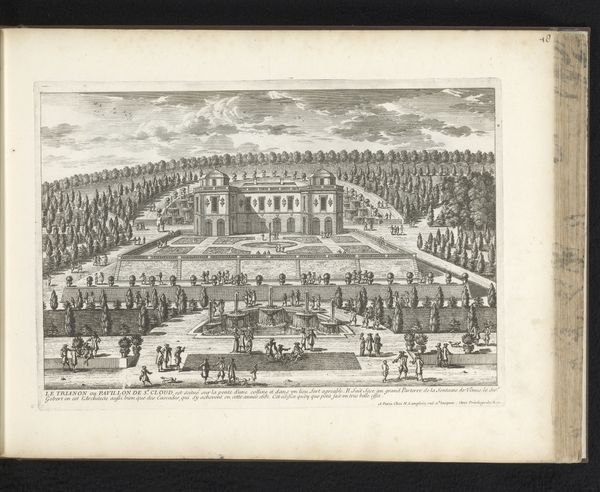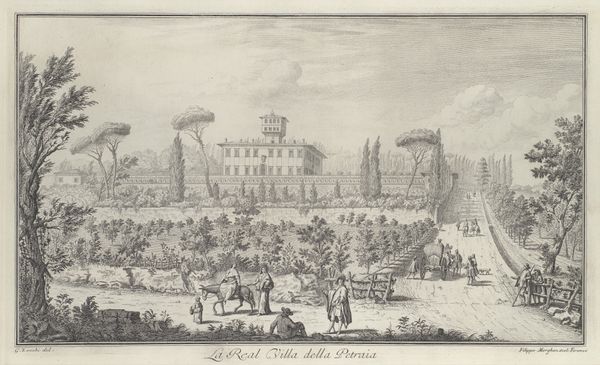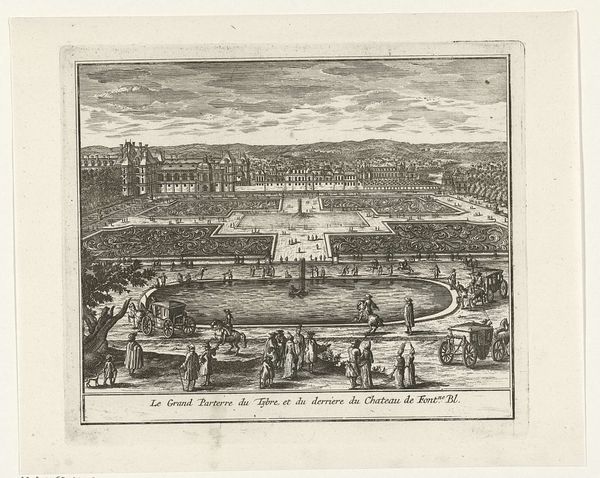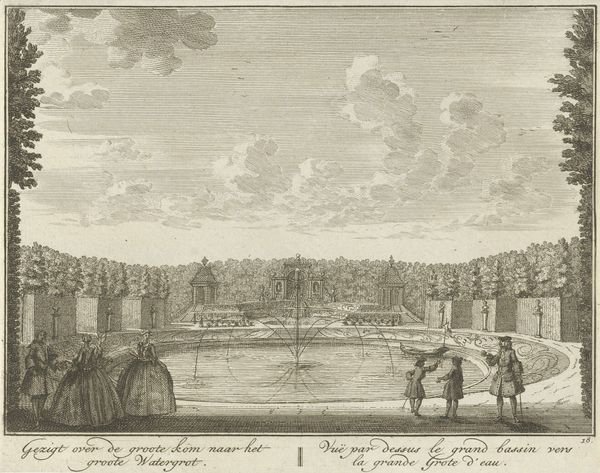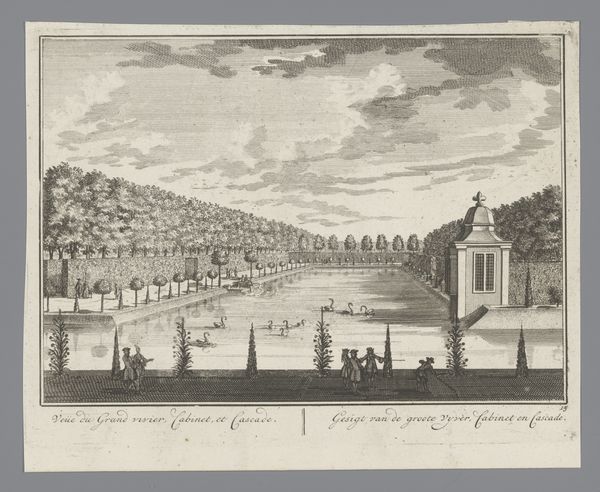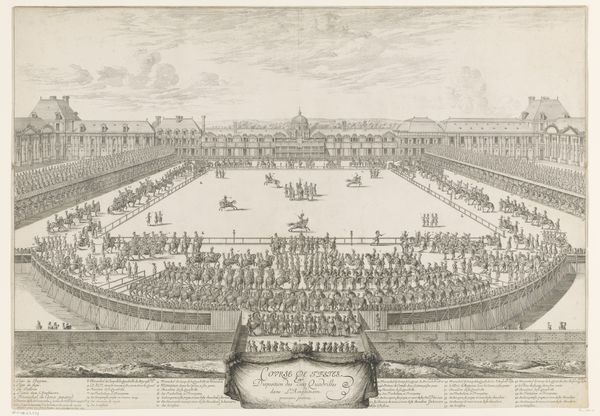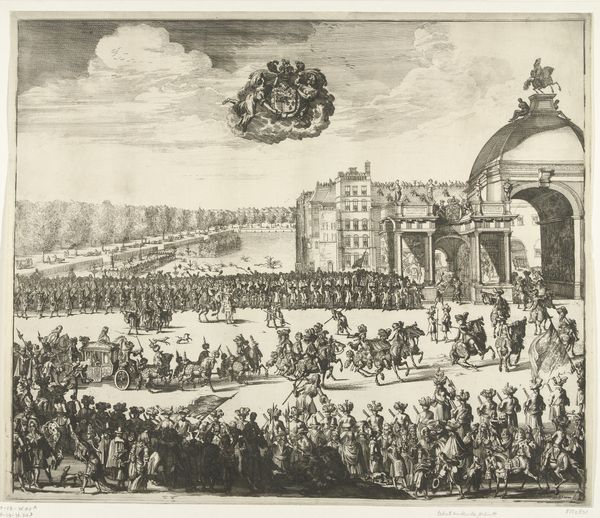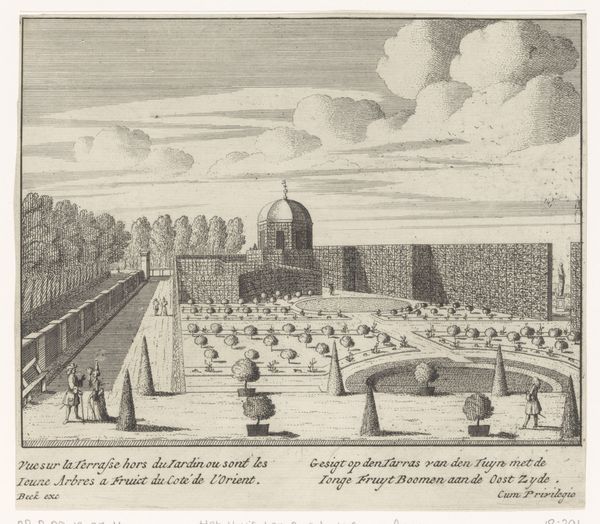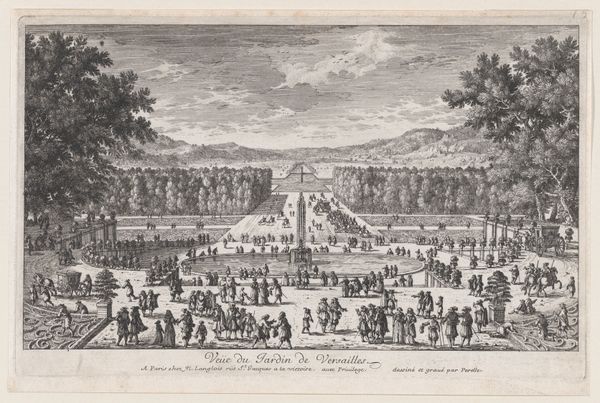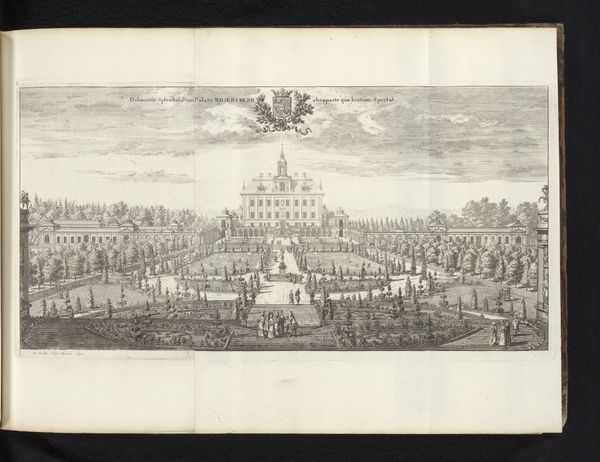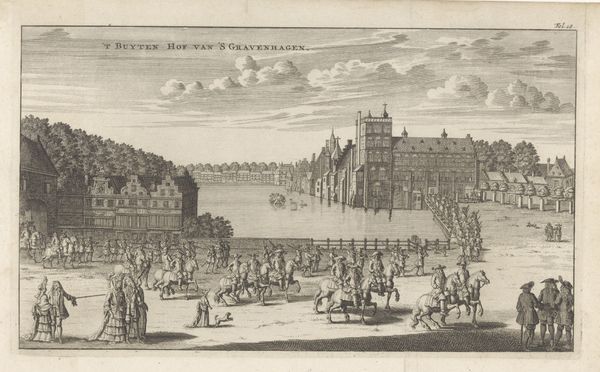
print, etching, engraving, architecture
#
baroque
# print
#
pen sketch
#
etching
#
old engraving style
#
landscape
#
cityscape
#
engraving
#
architecture
Dimensions: height 380 mm, width mm
Copyright: Rijks Museum: Open Domain
Curator: The formality is striking! Everything perfectly aligned and geometric, but rendered in these soft grey lines, the overall effect feels dreamlike and ephemeral. Editor: This is a print entitled "View of the Gardens of Vaux-le-Vicomte." It's an etching and engraving made sometime between 1631 and 1691 by Israel Silvestre, now residing here at the Rijksmuseum. Silvestre was a master of the print medium. Curator: Looking at the scale of the architecture versus the human figures, the contrast really emphasizes the power and control being exerted through this designed space. You can almost feel the societal hierarchies embedded in the landscaping. The landscape architecture is more than just aesthetics; it’s a statement. Editor: Precisely. Vaux-le-Vicomte was itself a statement. Nicolas Fouquet, Louis XIV's superintendent of finance, commissioned this palace and these gardens. It’s no accident that the splendor shown here ultimately led to his downfall. Curator: Interesting how Silvestre’s choice of etching highlights this performative display of wealth. The printmaking process itself becomes a vehicle for circulating and perpetuating these ideologies. It speaks to the labour of those who designed and produced these engravings. How many impressions were made, do we know? And who was its target audience? Editor: We do not know how many prints of this engraving were made. But, consider how this imagery reinforced the grandeur of French aristocracy but also facilitated its consumption among a wider audience through relatively affordable prints. It played a critical role in shaping perceptions of power and sophistication, you see. Curator: It’s quite potent when you think about it that way, turning an architectural marvel into a commodity. The way the architecture is so meticulously reproduced draws attention to the craft involved in this print's production and the networks that enabled its distribution. Editor: A great visual representation of both the extravagance and the ambition of the era. Thanks to the circulation and proliferation of prints like these, it allows us centuries later, a lens through which to understand both its creators, the power structures within the world the artists occupied, and also how and what its audiences came to expect and desire in society. Curator: Absolutely. These materials provide invaluable historical perspectives, highlighting not just the finished work, but the mechanisms of their distribution.
Comments
No comments
Be the first to comment and join the conversation on the ultimate creative platform.
